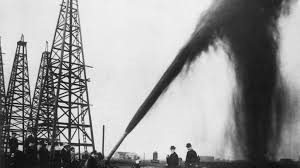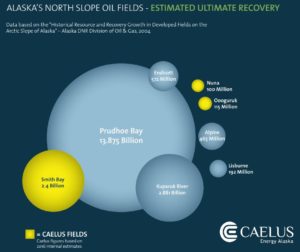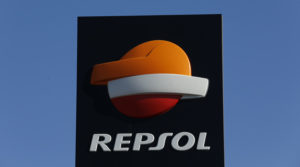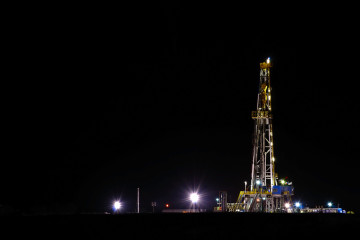Alaska Oil Find Biggest Onshore Oil Discovery in Decades! : A Well Thought Out Scream by James Riordan

An oil reserve of a potential 1.2 billon barrels has been discovered in Alaska’s North Slope in what the companies involved believe is the largest US onshore oil discovery in nearly three decades. Spanish oil company Repsol (REPYY) and Armstrong Energy announced the find On Thursday, saying their discovery is located at the northeastern edge of the National Petroleum Reserve-Alaska, near the village of Nuiqsut. They say production beginning in 2021 could yield a potential 120,000 barrels per day.
Repsol and joint venture partner Armstrong Energy claim to have found a massive conventional oil play that holds up to 1.2 billion barrels of recoverable light crude. The discovery was confirmed after Repsol drilled two test wells during the 2016-2017 winter season. According to the company, the area was previously considered to be a mature oil basin. Oil is expected to flow beginning in 2021, with a potential rate approaching 120,000 barrels per day.
Denver-based Armstrong, a privately held exploration company, operates the North Slope project and holds a 75% working interest in the Horseshoe discovery. The Repsol discovery follows the revelation of what geologists believe is the largest shale oil play in the country.
In November, the U.S. Geological Survey said the Midland Basin, which is part of the oil-rich Permian shale play, is estimated to contain 20 billion barrels of oil and 1.6 billion barrels of natural gas. The new figures would make the Midland Basin about three times bigger than North Dakota’s Bakken formation.
American oil producers, including Exxon Mobil (XOM) and Noble Energy (NBL), have sought to increase their bets on the Permian, one of the hottest production regions in the U.S. Exxon will pay as much as $6.6 billion for 275,000 acres of land in the Permian, doubling the company’s estimated resources in the Texas oil play.
 Texas is by far the largest producer of crude oil in the country, followed by North Dakota, Alaska and California. The massive find of conventional oil on state land could bring relief to budget pains in Alaska brought on by slumping production in the state and the crash in oil prices.
Texas is by far the largest producer of crude oil in the country, followed by North Dakota, Alaska and California. The massive find of conventional oil on state land could bring relief to budget pains in Alaska brought on by slumping production in the state and the crash in oil prices.
The oil resources lie in a well, called Horseshoe, that’s 75% owned by Denver-based Armstrong. Repsol owns the rest of this well.
The discovery is 20 miles south of where the two companies have already found oil in a project known as Pikka. That northern project is already in early development and is 51% owned by Armstrong, which is the operator on both developments.
“The interesting thing about this discovery is the North Slope was previously thought to be on its last legs. But this is a significant emerging find,” Repsol spokesman Kristian Rix told CNNMoney.
Of course, this news won’t ease rising concern among investors about the stubborn glut of oil in the U.S. There are increasing signs that shale oil producers are preparing to ramp up output after surviving a two-year price war with OPEC.
 Repsol, which is based in Madrid, is shown here drilling for oil in Alaska.
Repsol, which is based in Madrid, is shown here drilling for oil in Alaska.
Repsol has been actively exploring in Alaska since 2008 and has an additional presence in the Gulf of Mexico. Shares of the oil and gas company jumped nearly 3% in Madrid trading on Friday.
The North Slope find comes less than six months after Caelus Energy and private-equity giant Apollo Global Management announced a massive Alaska oil discovery in the waters of Smith Bay.
All of this is a big win for Alaska, which last year had to freeze hiring and limit state employee travel due to trouble in the oil industry. Alaska, which relies on oil and gas taxes for the vast majority of its state revenue, has been hit by the one-two punch of shrinking production from its mature fields and the fact that oil prices have been cut in half in recent years.
Things have gotten so bad that the Trans-Alaska Pipeline System is barely being used these days. “This is also great news for the State of Alaska,” Alaska Governor Bill Walker said in a statement. “We must all pull together to fill an oil pipeline that’s three-quarters empty.”
The discovery of bands of light oil came from two wildcat wells drilled this winter at an area known as Horseshoe, the Alaska Dispatch News reported.
“Repsol and partner Armstrong Energy have made in Alaska the largest U.S. onshore conventional hydrocarbons discovery in 30 years,” Repsol said. “The Horseshoe-1 and 1A wells drilled during the 2016-2017 winter campaign confirm the Nanushuk play as a significant emerging play in Alaska’s North Slope.”
 The finding extends the prospects of the Nanushuk discovery, first announced by the companies in 2015, by an additional 20 miles, according to Repsol. Nanushuk is in the Pikka Unit, a collection of land leases owned by the two companies.
The finding extends the prospects of the Nanushuk discovery, first announced by the companies in 2015, by an additional 20 miles, according to Repsol. Nanushuk is in the Pikka Unit, a collection of land leases owned by the two companies.
“The contingent resources currently identified in the Nanushuk play in Alaska amount to approximately 1.2 billion barrels of recoverable light oil,” Repsol said Thursday.
Repsol and Armstrong have “drilled multiple consecutive discoveries on the North Slope” since 2011. Respol will now determine development strategies for Horseshoe, a spokesman said.
“We’ve scored a good goal in the game, and we have to play the rest of it,” said Respol spokesman Kristian Rix, according to the Alaska Dispatch News.
The Horseshoe discovery was hailed by the likes of Alaska Governor Bill Walker and US Senator Dan Sullivan, who said the finding could be a major boon to oil development in the state.
“I believe that this announcement — with the state working together as a partner with Congress, the new administration, and the private sector — could usher in a new renaissance of economic growth and job creation in Alaska,” Sullivan said.
The estimates made by Respol, however, likely have not been confirmed by independent entities, said David Houseknecht, a geologist with the US Geological Survey in Alaska.
If predictions are correct, the Horseshoe discovery would be the largest onshore oil discovery in the US since the North Slope’s Alpine field, operated by ConocoPhillips, was found in 1994, according to the Alaska Dispatch News. Houseknecht estimated that Alpine will produce around 750 billion barrels of oil by its end.
The Horseshoe discovery could potentially challenge the 1969 finding of the Kuparuk River oil field, also on Alaska’s North Slope. Kuparuk has produced about 2.3 billion barrels of oil and is expected to top out at 3 billion barrels, Houseknecht said.
___








No Comment